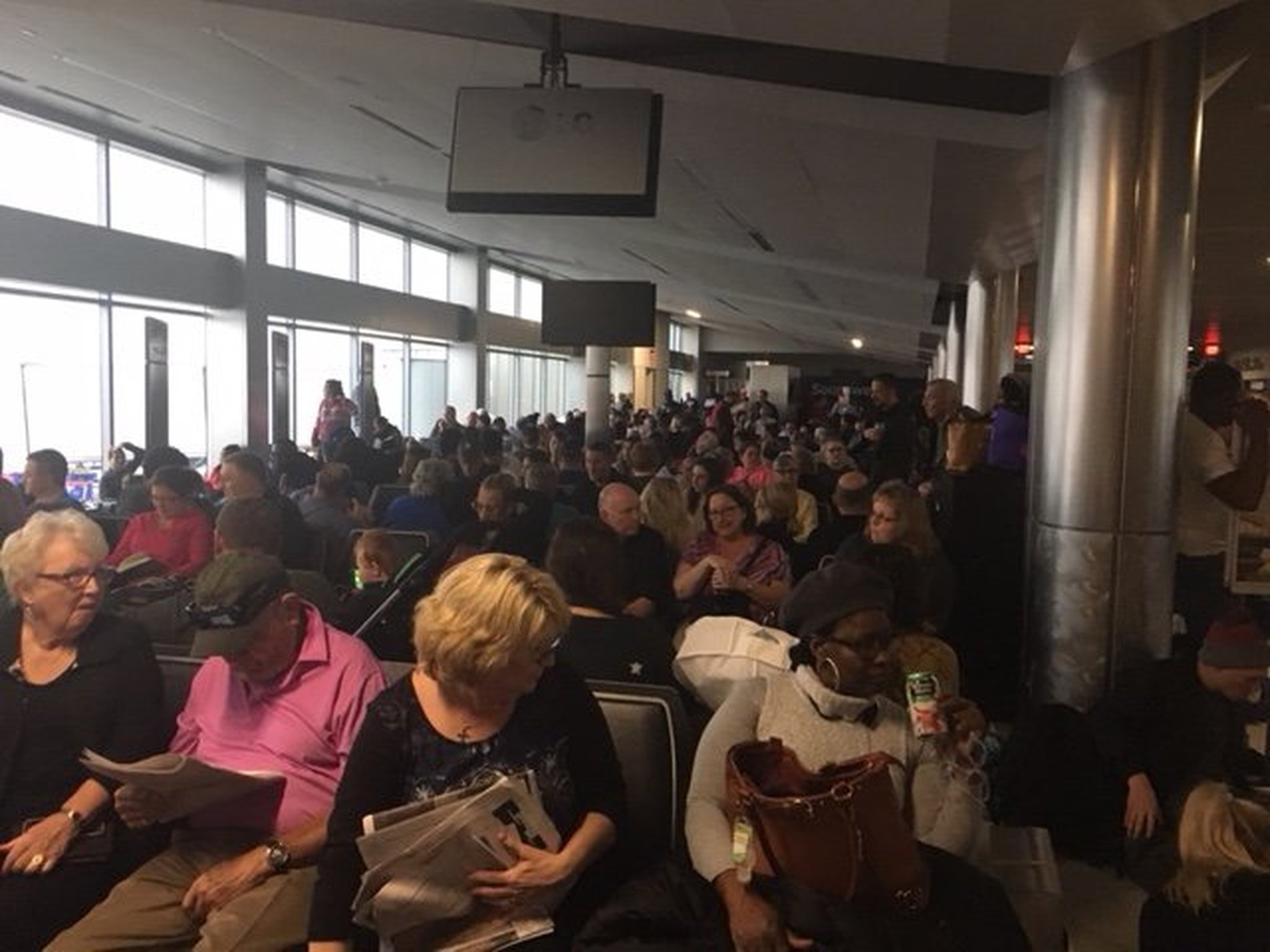The U.S. Department of Transportation is investigating nearly 100 tarmac delays that lasted for hours during the massive power outage at Hartsfield-Jackson International in December — including some planes stuck on the tarmac for more than seven hours.
There were at least 96 flights stuck on the tarmac for more than three hours during the Dec. 17 blackout, according to the U.S. Bureau of Transportation Statistics in a report released this week. It’s customary for the DOT to investigate tarmac delays that exceed the federal limit of three hours.
A DOT spokesperson said the agency “is reviewing the circumstances surrounding the lengthy tarmac delays that occurred at ATL on December 17, 2017.”
Credit: AJC
The tarmac delay rule prohibits airlines from tarmac delays longer than three hours for domestic flights and longer than four hours for international flights without allowing passengers the opportunity to get off the plane.
There are exceptions, however, including for "safety, security, or air traffic control-related reasons."
Airlines are also required to provide food and water, ensure lavatories are working and give any necessary medical attention to passengers during the tarmac delay.
“DOT reviews the facts of each situation to determine what, if any, action is appropriate,” according to a DOT spokesperson.
Last year, the DOT fined Delta $90,000 for not offering passengers adequate food during long tarmac delays in Atlanta and New York.
Among the issues during Hartsfield-Jackson’s outage: Jet bridges take a significant amount of power to operate. Hartsfield-Jackson officials said passengers were getting off planes with mobile stairways and with onboard stairways on smaller aircraft.
The flights stuck on the tarmac in Atlanta for the longest during the power outage were international flights. A flight from Nassau, Bahamas was delayed on the tarmac for seven hours and 12 minutes. Another flight from Toronto was stuck on the tarmac for seven hours and three minutes. And a flight from Panama City, Panama was delayed on the tarmac six hours and 56 minutes.
The power outage took out electricity throughout the airport, including at the international terminal and in Customs processing facilities. According to Hartsfield-Jackson, "there was not a safe method of deplaning international passengers" and securely getting them into the federal inspection stations for Customs processing.
The first concourse to get power back on was at international Concourse F, at around 7:30 p.m., more than six hours after the lights went out. Subsequently, planes still stuck on the airfield were sent to the international terminal to deplane.
But domestic flights were also held on the tarmac for hours, including a flight from Las Vegas delayed on the tarmac for six hours and 54 minutes, and a flight from Rochester, N.H. stuck for six hours and 51 minutes and a flight from Baton Rouge delayed six hours and 48 minutes.
One passenger, Jake Hollinger, after being stuck on the tarmac for hours after a flight from New York joked that he “could’ve walked from the airport to Buckhead” in less time.
Another passenger tweeted that she was "stranded on a plane from London Heathrow in Atl with 3 kids… We are tired, hungry and don't know what's going on."
Hartsfield-Jackson general manager Roosevelt Council said the fact that jet bridges could not be moved from airplanes prompted the Federal Aviation Administration to call for a ground stop to keep other planes from coming into the Atlanta airport.
“Our goal is to add as much power to those generators to power up a concourse,” including jet bridges, Council said. “That is a lot of power,” especially since each concourse has dozens of gates and jet bridges, he said. But, “that’s the key to getting the operation back in place.”
The outage wasn’t the only day in December when planes got stuck on the tarmac at the world’s busiest airport. Another 14 flights were held on the tarmac for more than three hours during a Dec. 8 snowstorm.
In the month of the power outage and snowstorm that led to thousands of flights being scrubbed, Delta had the highest cancellation rate among airlines, with 2.9 percent of its flights canceled in the month. The airline with the second-highest cancellation rate was Delta Connection carrier ExpressJet.
Delta came in 2nd in on-time performance for December, behind rival United Airlines. Delta also came in 2nd for the full year of 2017, with 85.4 percent of its flights arriving on time, behind Hawaiian Airlines in the No. 1 position.
MYAJC.COM: REAL JOURNALISM. REAL LOCAL IMPACT.
AJC Business reporter Kelly Yamanouchi keeps you updated on the latest news about Hartsfield-Jackson International Airport, Delta Air Lines and the airline industry in metro Atlanta and beyond. You'll find more on myAJC.com, including these stories:
Never miss a minute of what's happening in local business news. Subscribe to myAJC.com.
About the Author
Keep Reading
The Latest
Featured

